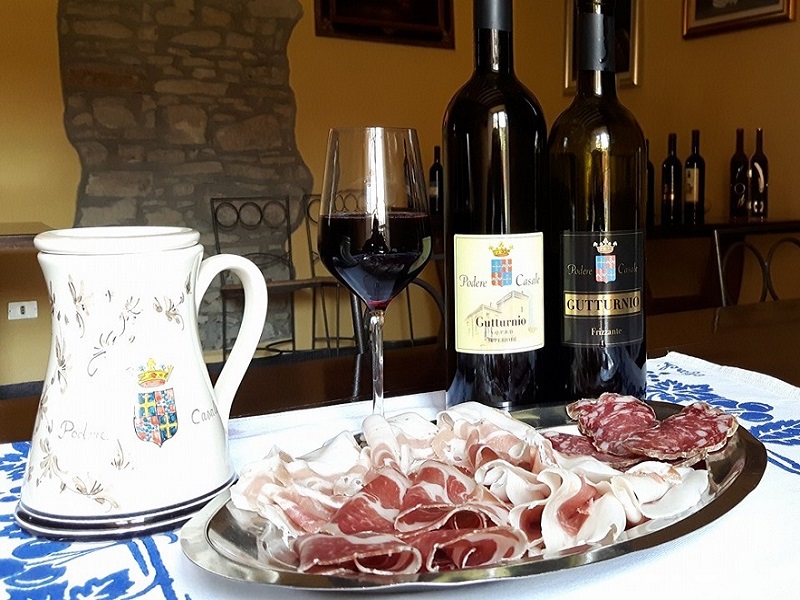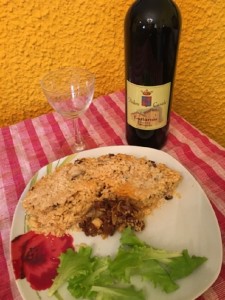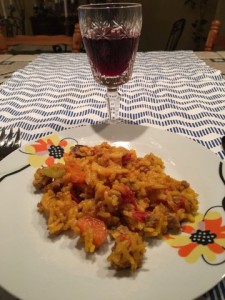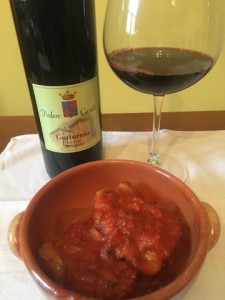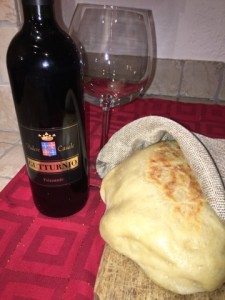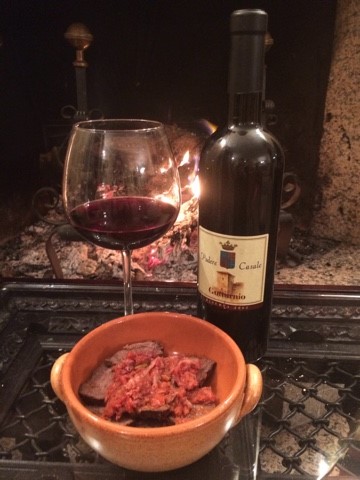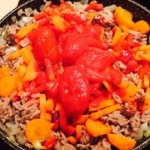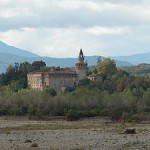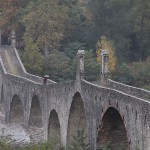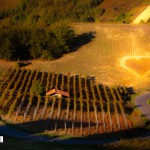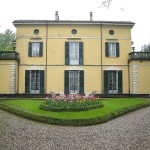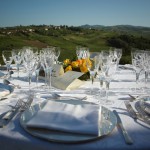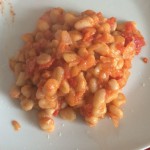200 Piacenza Cuisine Recipes: From Hors d’oeuvres to Desserts
The Piacenza cuisine is very rich: not only local genuine cold cuts like coppa, or high quality wines like Gutturnio, but also dishes, simple or elaborate, that offer a triumph of taste able to satisfy the most demanding palates. We are offering an array, as thorough as possible, of typical Piacenza dishes from hors d’oeuvres to desserts.
HORS D’OEUVRES AND SIDE DISHES
In Piacenza and its Province, hors d’oeuvres are no joking matter. Hors d’oeuvres are almost sacred: salame and coppa are the most important but also culatello of Soarza, near Parma. Cold cuts are served with butter, delicious pickled vegetables and olives which enhance the intense and delicate taste. There are several local variations: along the Po riverside “stricc in carpion” are served, whereas in the mountains thickly sliced salame is served with mushrooms marinated in oil. Sauces, which are never missing in proper Piacenza hors d’oeuvres, and can also be served as a side dishes, are prepared with garlic, walnuts, peppers ( raw or cooked ) and parsley.
Ajà (walnut sauce)
A very easy sauce to prepare and considered the king of the table in Piacenza. Aja’ is the name in the local dialect and is prepared with crushed walnuts and garlic, salt and bread soaked in water. The secret lies in crushing walnuts and garlic with masterly patience so as to obtain a smooth cream. This sauce was once used to flavor lasagna or tagliatelle at Christmas or Holy Friday. Today it is served on its own wit hors d’oeuvres.
Gnocco fritto (chisulèn)
The most famous and widespread hors d’oeuvre in the Piacenza province is gnocco fritto which is of Longobardic origin. It is fried bread dough filled with local cold cuts or cheese. A single recipe with many different names: in Bologna it is called “crescentina”, in the Parma area “torta fritta”, in Reggio Emilia and Modena “ il gnocco fritto “ and in the Piacenza area “Chisulen”
Pesto
Pesto is very easy to prepare, and like l’aja, it can be served on its own as a sauce for hors d’oeuvres or used to flavor pasta. It is made with basil leaves crushed with olive oil and local cheese, salt and pepper.
Duls e Brusc
Very tasty and particular. It is made with a glass of sugar, balsamic vinegar, raisins, pine nuts and grated chocolate. Perfect with wildfowl.
Green and red sauce
This sauce can be served with hors d’oeuvres or as a side dish and is prepared with parsley, garlic and fresh tomato sauce.
Fresh mushrooms in olive oil
Mushrooms are never lacking on a Piacenza table and are prepared in many different ways. Mushrooms in olive oil are the easiest to prepare but require attention. First of all, make sure you have them checked by an expert if you have gathered them yourself otherwise it can be very dangerous. Once you are sure they are real porcini, simply marinate them in olive oil, salt, and pepper.
Mushrooms in olive oil
This is a variation of the preceeding recipe which is more elaborate. Cook the mushrooms in vinegar and salted water. Then place them in a glass jar with rosemary and laurel. Cinnamon, nutmeg and clove can be added to give an exotic touch. Fill the jar with olive oil and seal.
Fried Mushrooms
Mushrooms have a leading role in the Piacenza cuisine: in this variation, porcini mushrooms should be medium size and hard and are passed in whipped egg, breadcrumbs and then fried. Serve hot.
Mushrooms in vinegar
This recipe is typical in Val D’Aveto. Mushrooms are prepared with vinegar, laurel, cinnamon, rosemary, nutmeg, and clove.
Mescè potatoes
Mesce’ potatoes, served as a side dish or with hors d’oeuvres, are typical in Val D’Aveto: after the boarder with Liguria they are called “U Perbugion”. Mashed potatoes are cooked in oil, butter, salt, onion, garlic, basil, milk and breadcrumbs.
Rustisana
Typical countryside dish, served with eggs. Eggs are cooked in onion, butter and tomatoes. The tradition was to bring the pot directly to the table and everyone would serve themselves from the pot with their spoon.
Salame cotto
Salame cotto, or “Salm de cotta” is a salame wrapped in gauze and cooked in water with celery, carots, onion for two hours. It is served warm in half centimeter slices and can also go with a sauce made with tuna, anchovies, eggs ,oil and vinegar and thinly sliced truffles.
Mostarda
Today no one makes homemade mostarda because the procedure is too complicated. It is much easier to buy it in glass jars. It is traditional to serve mostarda with boiled meat in the winter or use in the filling of “Turlitt” sweet tortelli at Carneval.
Stricc’ in carpion
“Stricc” in dialect are very small fish caught in the Po river in Spring and Summer. Not more than a couple of centimeters in size, they are fried and best served at least 24 hours after preparation.
Parsley sauce
This sauce is typical in the area around Cerignale and usually served with boiled meat. It is a combination of minced fresh parsley, the yolk of a hard boiled egg, soft inside of bread soaked in vinegar, salt, pepper, white wine and olive oil.
Farnese liver sauce
This is not a traditional recipe and can be considered a new entry. It is prepared with rabbit liver, egg, parsley, garlic, lemon and salt.
Pepper sauce
This sauce is made to be served with boiled meat: a triumph of red, green and yellow peppers prepared with olive oil, butter, tomato sauce, vinegar, and sugar.
FIRST COURSES
Piacenza cuisine is synonymous with quality: the secret lies in the ingredients, mostly cultivated ( or raised as far as meat is concerned ) locally in the hills of the Piacenza province. First courses is the pride and joy of the menu: traditional dishes include a vast choice of soups, pasta served in broth, pasta, and risotto. The recipes vary from one area to another, even from one town to another. We will attempt to offer the most classic.
Anellini (Buslanei)
This dish comes from Pianello but is widespread throughout the Piacenza province. Traditionally it was the typical Sunday meal: in large families, Anellini were prepared early Sunday morning so as to serve them fresh. Flour and eggs were kneaded vigorously; the pasta strips sealed one by one to make anellini or buslanei which were then cooked in a beef or chicken broth.
Oven cooked anelletti
This recipe comes from Palermo and has become popular also in the Piacenza area but are prepared without fried eggplant.
Anolini are a typical pasta dish in Piacenza: the origin of the recipe has been handed down by way of mouth from mother to daughter through the centuries. Preparation of anolini is a ritual: Christmas Eve the family gathers to help prepare Christmas Anolini or “anvein d’Nadal”. A rich, elaborate and refined dish typical for special holidays.
Castell’Arquato anolini
These anolini are filled with breadcrumbs, aged parmigiano cheese, eggs and nutmeg and are cooked in a veal meat broth while in the past a salame broth was used. Typically from the area surrounding Castell’Arquato, they can also be found in the Carpaneto and Caorso area. There are many variations of this recipe: one consists in the soaking the breadcrumbs in a meat sauce and serving the anolini in the meat sauce instead of in broth.
Anolini with a modified filling
This recipe calls for a filling prepared with stale bread, eggs, parmigiano cheese, salt, pepper, and flour
Bavette in enriched pesto
This recipe comes from Liguria and is common in bordering areas. Pesto, very common throughout the Piacenza area, is enriched with green beans and potatoes.
Rice bomba or “ad ris cui pisson” in dialect, was traditionally prepared for the Feast of the Virgin Mary in August. A large pot of rice with a sauce made of pigeon meat, mushrooms, truffles. It is said to have been the favorite dish of Queen Elisabeth Farnese of Spain.
Rice bomba variation
This recipe calls for cooked pigeon cut in small pieces mixed into rice and cooked with butter in the oven. In some areas of Piacenza a meat ragu is used instead of pigeon
Caniffe
Caniffe are meat balls once called “mysteries” because no one knew for sure what the ingredients were; in fact the recipe calls for the use of any left over meat mixed with breadcrumbs and salt.
Farnese cannelloncini
This dish is a very thin pasta filled with prosciutto cotto, cream and parmigiana cheese; cannelloncini are cooked in the oven au gratin. A very simple tasty dish.
Capellacci,or tortelli,were once served without a sauce. Today they are served with a butter sage sauce and parmigiana cheese. There are numerous variations depending on the taste of different areas.
Chisòl with polenta
A very ancient recipe, well known in the area of Monticelli d’Ongina. Cold polenta is grated and mixed in with flour, milk and salt. The mixture is then spread with a rolling pin, divided into discs and fried in lard or olive oil.
.
Chisola
This recipe was common above all in Bardi: wheat and corn flour are mixed with salt and water. The dough was pressed with special terra cotta or iron tools.
Chisola with salame
Bread filled with salame , fried in lard and oven heated.
Cudgòtt
This was a method used last century in the area around San Pedretto to recuperate left over polenta which was kneaded with white flour, eggs, sugar, grated lemon peel, to obtain a dough which was cut in slices and fried in lard.
Crocetti bardigiana style
A valid alternative to anolini: very thin discs of pasta filled with beef stew, minced meet and parmigiano cheese
Fritti
Potato croquettes prepared in the Cerignalese and Ottonese areas: boiled potatoes are mashed and mixed with egg, salt, then passed in flour and fried.
Gnocchi
This dish is never missing from the menu in Piacenza: depending on the various localities, there are different sauces: melted butter, walnut and garlic sauce, tomato and mushroom sauce, meat sauce.
Lasagne
Lasagne are prepared with a sauce of carrots, celery, parsley, onion, olive oil, minced meat, fresh mushrooms, tomato sauce and milk.
Pasta
Traditionally pasta did not have a meat sauce and was prepared Christmas Eve especially in the Groppallese area in Val Nure; the tradition was that all the members of the family gathered together and wet their eyes with the water the pasta was cooked in and recited prayers to the Holy Child while feeding the stove with the shells of the nuts used for the pasta sauce. Once large quantities of pasta were prepared to last the entire week of Christmas.
‘l pastiss (maccheroni timbale)
A complex dish that calls for flour, butter, sugar, eggs, cognac, grated lemon peel, parmigiano cheese, soaked dry mushrooms, laurel, onion, nutmeg, tomato sauce. In ancient times maccheroni were made by hand with the use of special tools. In Bardi liver and interiors were used to enrich the sauce. In other areas the ragout was made with pigeon meat.
Maccheroni bobbiesi (with “l’agugia” knitting needle)
Probably no one prepares maccheroni today following the ancient recipe. Typical of the Bobbio area, and very scenographic, the recipe dates back to the Middle Ages. The dough was wrapped around a knitting needle
Marubéi
A typical dish prepared all along the Po riverside from San Nazzaro to Castelvetro, but the filling varies according to the tradition of each town. Generally the filling calls for stewed beef, veal, pork, calves brain, breadcrumbs, salt, pepper, parmigiano, nutmeg. Marubei are cooked and served in broth
This recipe comes from the Cremona area but has taken root in Emilia Romagna especially in the Piacenza Province where numerous variations can be found. Very small cappelletti filled with meat and cooked and served in a vegetable broth
Mes mànag da frà
Another very ancient recipe: women in the Piacenza area prepared this dish with home made maccheroni filled with stewed meat, butter, breadcrumbs, red wine, parmigiano cheese, eggs, onions, celery, carrots, garlic, salt, pepper, and nutmeg. This pasta is cooked in a meat broth.
Malfatti
Literally malfatto means badly made. On the contrary, this pasta requires attentive care. The ingredients are boiled spinach mixed with butter, egg yolk, ricotta cheese, salt, pepper, flour and nutmeg. Once blended, small pieces are cut and boiled in salted water. A cream sauce can be used but the original traditional recipe calls for butter and parmigiano cheese.
Panàda
Typically served Holy Friday in the families of poor farmers, stale bread fried in olive oil or butter, with the addition of abundant water and cheese.
Oven baked Panzerotti
This recipe has just recently been added to the Piacenza cuisine as it is a typical dish of central-south Italy. It is prepared by filling a disk of pasta with ricotta cheese, spinach, parmigiano cheese and nutmeg. The disk is folded over to form a half moon and sealed. It is served with butter, cheese and meat ragout.
Paglia e fieno
Green tagliatelle are a classical Italian dish, today widespread also in Emilia Romagna. A very rich, inviting and choreographic first course owing to the colors. In the Piacenza area it is served with melted butter, prosciutto cotto, fresh peas, salt and parmigiano cheese. A typical wintery dish.
Perbugìe (Biligòtti)
Dried chestnuts slowly boiled in water and served in milk. For centuries this was a basic dish for families living in the mountain areas
Peré ravazzole
Fresh chestnuts boiled in salted water and served with milk.
Peré sgiué
Again chestnuts but this time dried out on a stove or oven and then boiled in salted water.
Picàja
An ancient recipe that comes from the town of Bardi: chicken breast filled with bread, cheese, eggs, spinach. It is boiled in broth and served very hot.
We cannot speak of Piacenza cuisine without mentioning pisarei e faso, by all means the most traditional dish of the area. The farmers of the Piacenza Province actually anticipated what today is considered macrobiotic nutrition. The combination of grain and legumes (flour and beans) provided the necessary proteins in place of meat which was too expensive or not available. This dish has been given value and is regulated by the De.Co brand. The recipe dates back to the Middle Ages and was served in convents as a poor but nutritious meal to pilgrims on their way to Rome on the Via Francigena.
Pieni
Typical recipe of the Cerignale area, “Pin” is floured dough boiled in salted water made with beet tops, olive oil, butter, onions, garlic, parsley, breadcrumbs, pamigiano cheese, ricotta, flour and eggs.
Ravioli (raviò)
This recipe comes from the mountains of Val Trebbia and Val D’Aveto. Its preparation calls for the use of local cheese. As it is a complicated recipe, families today will find it on the menu in the typical ancient Piacenza locandas. The ingredients are pasta filled with cheese, spinach, grated left over bread, eggs, pepper and nutmeg. Absolutely delicious.
Rice and chickpeas
Chickpeas were cultivated above all in the Cerignalese area which is where this recipe originated. Unfortunately the cultivation of chickpeas is disappearing as is the habit of preparing this dish.
Rice and pork rind
In this variation, the recipe calls for pork rind and is true to the farmer’s tradition that no part of the pig is wasted.
Rice and giblets
This is a typical dish on the Lombard side of the Po’ river but can easily be found also in the Piacenza area.
Rice cabbage and crostini
Definitely a wintry dish, it was once prepared when the pig was slaughtered as pork ribs were also employed,
Rice alla certosina
Unfortunately this is one of those dishes that is disappearing owing to the scarcity of its principle ingredient: river shrimp, today very rare. Today sea shrimp are employed but the taste is definitely different. The recipe was invented by the Monks of the Certosa di Pavia who first used river shrimp, abundant in the surrounding irrigation ditches and canals, to add flavor to risotto.
This unique risotto is typical in the cuisine of Piacenza and Emilia in general. A very rich dish which calls for beef, veal, pork, mushrooms, prosciutto, onions, carrots, celery, saffron and parmigiano.
Risotto in the pot
Risotto in the hills of the Piacenza province calls for vegetables: olive oil, butter, mature tomatoes, and mushrooms
Rice with pork tail
This dish is above all prepared in the winter when pigs are slaughtered. A tasty and scenographic :rice is placed on the plate in a cupola with the pork tails and their juice on top.
Tagliatelle with walnut sauce (savoeu)
A typical recipe from Bardi, this dish is synonymous with Christmas: in fact, tagliatelle served in a walnut sauce, in dialect “savoeu” are the Christmas meal. This tradition has been handed down through generations and it is still quite common to find this dish on the menu Christmas day in the restaurants of Piacenza and surrounding province.
Tagliatelle with ricotta and walnuts
This dish come directly from the mountains of the province, near the border with Liguria. The ricotta used must come from goat milk.
Tagliatelle with beans
Another dish that comes directly from agricultural traditions. Peasants once ate beans instead of meat.Today the sauce is prepared in a sautéed butter, lard and onions.
 Tortelli with spinach (turtéi) or Tortelli with tail ends
Tortelli with spinach (turtéi) or Tortelli with tail ends
A dish which is particularly suitable for those on a diet: it is the typical “lean dish” which can be served with cream and parmigiano cheese instead of the traditional butter and parmigiano.
Tortelli with chestnut flour
A recipe which comes directly from the mountain areas where chestnuts are abundant. Butter, ricotta and walnuts for the sauce and chestnut flour and milk for the filling. A very unique flavor.
With amaretti, with ricotta, elongated, square or round, with a tail or without: there are all kinds of tortelli. What must not be lacking is squash, baked in the oven or boiled, with its unmistakable sweet flavor.
Tortelli with nettles
Tortelli filled with ricotta, gorgonzola, parmigiano and young nettles.
Chickpea soup
Typical in Val Tidone and bordering Oltrepo Pavese, chickpea soup is an excellent substitution to meat. Very nutritious, it is a winter dish that must be served very hot.
Fish soup
Traditionally this recipe comes from San Giuliano and was prepared Christmas Eve. The main ingredients are small fish from the Po river.
Vegetable soup
SECOND COURSES
If Piacenza’s first courses are delicious, second courses are equally good: both meat and fish in this part of Italy are excellent. A rich variety of recipes for every taste and palate.
Duck
This recipe calls for a female duck because the meat is tender and refined. This dish is usually prepared during the holiday season and the duck is filled with cognac, rosemary, salt and sage.
Many of the recipes listed up to now are traditionally Christmas dishes; lamb, Piacenza style, is instead clearly an Easter dish. Lamb or kid are served with the traditional “pista ad grass” sauce of minced garlic, lard and parsley.
Stewed Eel
This recipe is typically found along the Po riverside and is served with buttered peas. In the past, eels were cleaned by rubbing them with wood ashes.
Grilled Eel
For this variation, eel is grilled over a charcoal fire ideal for melting the fat while maintaining the meat intact.
A typical dish of Piacenza, often served on holidays, this veal roast recipe includes bacon and aromatic herbs and very long low flame cooking
Goose Batù
In the past,bread and cheese were grated and blended in the blood of the dead goose. The mixture was fried and served with the goose which was cooked in a terracotta pot.
Round discs of bread dough are oven baked and covered with honey or sugar or in alternative, oil and salt.
Basaprétt
This is a very light dish: spring herbs lightly boiled in water and then sautéed in butter.
Bortellina is a recipe that is prepared in different ways depending on the area. It is a type of focaccina, served with the traditional local cold cuts and can be prepared Roveleto Landi style ( with apples) bettolese ( with yeast), Val Luretta ( with fresh lard and baby onions), or with leftover soup or rice.
Capon Casserole ( Capon d’Nadal)
Capon is the traditional Christmas dish: loved so much as to be mentioned in the dialect poems of Valente Faustini.
Kid Cacciatora style
A typical seasonal recipe, often served with either boiled potatoes, or boiled rice, or polenta or stewed vegetables
Stuffed Cabbage (Cori pin)
A small, locally grown cabbage, filled with grated bread and cheese, and boiled minced meat. A simple recipe from the past still popular today.
Stuffed Cabbage variation
In this variation, cabbage is filled with veal ,lard, eggs, clove and aromatic herbs.
Cima
Beef flank is prepared with butter, onion, carrots, laurel, minced parsley, eggs, parmigiano cheese and garlic: this recipe comes from Liguria and is served in the bordering ares of Casale and Cerignale.
Stuffed Onions
A typical dish of the Ottone area in upper Val Trebbia and Val D’Aveto, onions are filled with grated bread and cheese, salt, eggs, chard.
Pork coppa is never missing on a Piacenza menu: it is cooked very slowly in white wine , with butter, olive oil, onions ,rosemary, salt and pepper. A real treat everyone loves for its rich taste.
Pork Rind and Chickpeas ( or Beans)
This dish comes from Val Tidone, and was a way, in the past, of using every part of the pig. Pork rind is served with pork ribs to add flavour to chickpeas or beans.
Veal Cutlets
Veal cutlets are served with an elaborate sauce made with minced chicken giblets and mushrooms, sautéed in butter with finely minced onion and vegetables, sausage breadcrumbs.
Duls e brusc
Typical in Val Luretta, this sauce is unique owing to its sweet flavour. It is prepared with chicken or turkey depending on the area, sugar, vinegar, raisins, breadcrumbs, onion, oil and lard.
Roast Guinea-Hen
Once this recipe called for wrapping the guinea-hen in a pork gauze; today herbs and butter are used instead.
In the past, the guinea-hen was sealed in clay and baked. The clay was broken at the table in front of the guests. Today a clay casserole is used and the taste is the same. An ancient recipe which dates back to the Lombards, common especially along the Po river from Piacenza to Cremona.
Guinea-Hen Old Piacenza
The preparation of this recipe is rather complicated: once the guinea-hen has been boned, it is cut into small pieces; strips of turkey, prosciutto cotto, sausage, giblets and bread are added and cooked with vegetables.
Liver à la Lodigiana
Also a dish of Piacenza. Liver is wrapped with prosciutto cotto and fennel and cooked in butter and white wine.
Focaccia with Ciccioli
A traditional dish of Castel San Giovanni, it has spread throughout the Piacenza province. Ciccioli are fried pieces of pork fat and are added to the dough of white flour, salt and yeast. Perfect served with local cold cuts.
Omelette with spinarò
This recipe comes from the Groppallo area, where spinarò mushrooms with a delicate taste, are widespread.
Fried River Shrimp
Above all in Castell’Arquato, shrimp were caught in the streams and fried in oil or lard.
Gambotto (o gambòn)
Young pork thigh, similar to zampone, boned and seasoned with salt and aromatic herbs aged at length.
Rabbit Gateau
Boned rabbit, cut in small pieces and cokked with onion, butter, prosciutto crudo, pepper, aromatic herbs, and served with besciamella.
Rabbit in salmì
Typical recipe from Ferriere, rabbit is cooked in covered with barbera wine, vegetables and hers.
Snails
There are numerous ways to prepare snails, depending on the area. In the typical recipe of Groppallo, snails are sautéed in butter, oil, onion, with the addition of salt, pepper, nutmeg, parsley, celery, and tomato sauce. In Bobbio, snails are served with spinach and the recipe is famous throughout Italy.
Stewed Codfish
Traditionally, Bertagnino codfish should be used as it is small and more tasty. The typical Po riverside recipe is very simple: codfish is cut in pieces, covered with flour and fried in lard.
Stuffed Ovuli
Widespread in the Gramizzola and Ottone areas, ovuli, a type of mushroom, are stuffed with breadcrumbs, cheese, boiled meat and eggs. In the past, it was a way of using left over meat.
Typical farmer’s dish, widespread during harvest time.
Panizza
An ancient recipe of the Emilia area: bring broth to a boil, add rice. Once the rice is ready, mix in flour and fry with butter, oil, meat ( above all sausage) and cheese.
Partridge à la Creme
Best in autumn, when partridges are more savory, the recipe calls for young partridges with tender meat, cooked with juniper, lard or bacon, and white wine.
Pess in ajòn
In the past, above all in the Castelvetro area, this method was used to conserve fried fish to avoid it from spoiling. Codfish, eel or stricc are marinated in garlic, vinegar and water.
Pin
Typical recipe of Val Nure, a mixture of boiled potatoes and spinach, blended with flour, eggs,salt, pepper and nutmeg.
Polenta with horse meat (Pulenta e picula ad caval)
This is a typical recipe of the Piacenza Province, la picula ad caval, served with polenta made with corn flour and minced horse meat.
Flavored polenta (puleita consa)
Corn flour polenta is flavored with a sauce prepared with oil, butter, onion and minced beef. Let the polenta cool, cut in strips and cover with pecorino cheese. Polenta can be served with many different ingredients: with stracchino cheese, with cabbage or with potatoes.
Pùta
A softer polenta, prepared with less flour and flavoured with butter, milk, ricotta and gorgonzola or with a tomato and mushroom sauce.
Ragò
A very difficult dish to find nowadays, a stew prepared solely with chicken legs.
Radicchi with lard
This recipe is very old and is used in periods of particular difficulty, like the Second World War, when olive oil was scarce. Herbs ( sprell, persagheina, gurgnei, casgno ) are cooked in lard and served with sprayed vinegar.
Supei with oli
Leftover bread cut in pieces and placed in a bowl with two tablespoons of oil, salt and boiling water. Add grated parmigiano cheese and an ancient delicacy is ready.
A revised version of stracotto or beef stew in which beef is cut in thin slices and served with polenta or mashed potatoes. Stracotto is also used in the filling of anolini. It is a widespread dish in the Piacenza area and varies depending on where it is prepared. The stewed donkey meat is famous.
San Nicolo’ Stracotto
Vegetables are sautéed in a terracotta pot , meat is added and then cooked with an addition of red wine.
Grandad’s pork skewer
Whether wood or metal pins are employed, the recipe is the same: small chunks of liver, sausage and pork meat cooked on a pin.
Testa in cascetta
This recipe was prepared in the Ertola di Rezzoaglio area, in the season pigs were slaughtered. The head of the pig was boiled, boned, and pieces of meat were then boiled in a copper pot with orange peels and lemon juice ( and some add rum)
Tasto
A very ancient recipe and widespread in the Piacenza area; in Val Trebbia it is called “cima”. Veal is cooked with chard and parsley.
Chard pie
A pie made with chard, flour, lard, olive oil, eggs, cheese and ricotta.
Potato Pie
This recipe is prepared, above all, in Val Luretta and there are many variations depending on where you are. The classic recipe calls for potatoes, cacao cheese, salt, pepper, sugar, onion, butter, grated lemon peel, flour, egg, yeast and olive oil.
Wood thrush and polenta
These birds, once abundant in the Piacenza area, are sautéed with butter, olive oil, onion and garlic and served with steaming polenta.
Beet tops pie
The Bardi version of chard pie; the difference lies in the use of beet tops instead of chard and parmigiano cheese instead of ricotta.
Rice pie
This dish was widespread in the county side and there are many ways to prepare a rice pie. Rice was widespread in the Piacenza area because many “mondine” or female workers in rice fields came from Piacenza and were often paid for their labor money and with rice.
Tench
This dish is prepared mainly along the Po riverside. Once the fish was filled with vinegar to eliminated the muddy flavour of its meat.
Piacentina tripe
The distinctive trait of Piacenza tripe is the use of white beans from Cerignale and Castel San Giovanni.
Grilled Baby trout
Widespread in the mountain areas of Val D’Aveto and Val Trebbia, this recipe is based on quality ingredients, that is trout from the Po river.
Turta ad sàngu
This dish comes from Soarza and was once widespread in the Region. Onion and lard are sautéed in Fresh pig’s blood mixed with milk.
Vartìs
Typical Po river side omelette prepared with boiled hop sprouts cooked with eggs and olive oil.
Verzolini
This recipe was invented in the past to use left over meat which was minced and sautéed in butter with onion and cabbage. An ideal winter dish said to have been the favourite dish of Elisabetta Farnese, Queen of Spain.
Filled zucchini
A classic still today: zucchini are cut in half and filled with breadcrumbs, minced meat and parsley.
DESSERTS
Desserts are as important, if not more, than first and second courses in the Piacenza cuisine. A tradition that dates back centuries, with roots both in the country side and in towns, along the Pò river as well as in the mountains and the variety of territories offers a rich variety of recipes.
Bastoncini
Sugar, melted butter, flour and cognac are blended together. The dough is then cut in strips which are cooked in oil and then covered with sugar.
Bédui, barciùll
Sliced pears or apples oven dried. In the area around Cerignale cherries are dried.
Buslanei (ciambelline)
This is the dessert par excellence of Mamago ( and Val Tidone) and there are variations for every taste: with or without sugar, hard or crumbly. It was once a tradition for god fathers to gift these sweets to the Confirmed; a tradition that dates to 1300.
Cacio bavarese
This recipe should be prepared a day before serving as it must rest for a day in the refrigerator. It is made with eggs, butter, sugar, vanilla, rosolio, alchermes, cognac, rum, ladyfingers, and cocoa.
Canestréli
These are typical biscuits of upper Val Trebbia and Val D’Aveto: made with flour, sugar, grated lemon, salt, rum, milk and butter.
Cassata of Santa Lucia
Piacenza version of cassata: eggs, sugar, milk, marsala, dark chocolate, torrone, ladyfingers, whipped cream and candied fruit.
Ciambella
White flour, eggs, sugar, butter, yeast, lemon peel and raisins are blended together and the dough is worked to form a circle with a hole in the center.
Home made ciambella
Flour, eggs, sugar, milk, grated lemon peel, cedar, baking powder all mixed together. Once this preparation was baked in the oven after baking bread.
Sweet chissò
It was tradition in the Piacenza country side to give these chissò to children who helped light and care for the oven. Bread dough cooked in boiling oil and covered with sugar.
Bunèttu
This is actually the Piacenza version of Crème caramel and is prepared above all in Val D’Aveto. The original recipe calls for bitter almonds.
Buslan (ciambella)
Ciambella is prepared throughout Italy, it is the cake of the people and the tradition goes back to the middle ages, when the “buccellato” or sweet bread was prepared by peasants and gifted to the master at Christmas. The medieval latin name, “buccelatum” comes from “bucella” which means “boccone” or bite which comes from “bucca” (bocca) mouth. Before it was probably a bread biscuit. Monsignor Tammi writes in his vocabulary that the best “buslanar” or those who prepared the “buslan” , were from Noce di San Nicolò and Pianello.
Cacafrone
Popular recipe of Fogarole, it is a very “poor” recipe: the yolks of hard boiled eggs are blended with butter and sugar and spread on ladyfingers in layers.
Chiffar
Croissants made with flour, almonds, butter, powdered sugar and grated lemon.
Cestei cul pumm
Traditional “cestini con la mela”(baskets with apples) that were prepared in the country side. Sugar was added to the bread dough and worked to the shape of a basket with an apple in the center and baked.
Croccante
Almonds, butter, sugar : few ingredients for an exceptional dessert that dates to 1300. Tradition tells that enormous croccanti shaped like baskets or towers were prepared for nuptial feasts: the bride had to break the dessert with a hammer because it contained a live bird which would fly away in sign of good fortune. In Bardi a white croccante is made with egg white.
Sweets with amaretti
A traditional sweet of San Giovanni and a specialty of a pastry store thus a secret recipe.
Santa Caterina sweets
Common in Fiorenzuola, fried pieces of shortcrust .
Focacetta
Blend of flour, milk, salt, and non coagulated milk used in preparing cheese. This recipe was popular in the Rovereto di Cerignale area.
Focaccia with grapes
Today this dessert is made with raisins, but in the past, when there was poverty, dried grapes were used.
Fritelle
Classic sweets for Carneval, flour, butter, salt, grated lemon fried in boiling lard.
Rice fritelle
These were once prepared to recuperate left over rice which was mixed with flour and eggs and fried in oil or lard.
Fritelle or (sgonfietti)
Fritelle prepared throughout the Region, prepared in many variations: generally flour, butter lemon, egg yolks and podere sugar are the ingredients. But a family from Emilia can prepare them to their taste.
Chestnut flour fritelle
Typical of Val Trebbia, these fritelle are made with chestnut flour, oil, salt, raisins and pine nuts.
Fried Apples
Apple strips dipped in a batter and fried in boiling oil.
Milk brulé
Milk, flour, egg, sugar and salt mixed together and left to cool: some variations call for adding liquor.
Milk soufflé
A frozen dessert prepared with cream, eggs, alcohol, vanilla, isinglass, sugar, biscuits and sour cherries.
Marinà
Black cherries boiled in a pot with white wine, cinnamon and sugar.
Chestnut Jam
A typical recipe of Ottone Soprano, ingredients are chestnuts, sugar, water, vanilla, grappa and cognac.
Fig marmalade
Very tasty, especially in the winter, the preparation calls for figs, lemon and sugar.
Sweet Marubén
Typical sweets for Carneval and San Giuseppe, they are prepared above all in the Castel San Giovanni and bordering Pavese areas.
Melichini
Very lovely round biscuits, easily found in supermarkets throughout the Piacenza area, with apricot marmalade filling in the center.
Mosto
Red or white grape juice with the addition of flour and sugar. It is often also used for filling sweet tortelli.
Sweet Bread
This dough was once used to make apple baskets for children.
Potato bread
Flour, potatoes, bread, yeast, salt, water are the ingredients of this simple but tasty recipe.
Squash bread
This recipe comes from Monticelli d’Ongina and typical at Carneval. It is less popular today.
Sweet bread with figs
This is a variation of sweet bread that comes from Albarola where figs are abundant.
Pattòna (castagnaccio)
Typical of Cerignale: chestnut flour and the liquid which remains after cheese or ricotta are made. This liquid is called “serion or scògia.
Shortcrust
This shortcrust is slightly less sweet than other recipes because it is prepared with flour, sugar, butter, salt, eggs and water all blended together.
Sbrisulina
Typical of Caorso, this dessert is made with flour, butter, lard, sugar, egg yolks, lemon peel, salt and a glass of dry white wine.
Fruit Serrò
The first day apples are peeled and cooked in marsala and white wine, clove and cinnamon. The next day a dough is prepared with flour, eggs, butter, liquor, sugar, lemon. Bake and serve with apple topping.
Spongata
Typical in Busseto, Cortemaggiore, Monticelli, this dessert spread to the area along the Pò river and to the Parma area. Spongata probably is of Jewish origin as there were many Jews living in the area.
It is prepared with a dough of flour and sugar filled with amaretti, walnuts, almonds, honey, pine nuts, raisins, clove, cinnamon, and orange peels.
Sprèll (sprelle)
Sprelle are sweets prepared for San Giuseppe and Carnival and are made with flour, yeast and rum. There are many variations. The Alla Carla add warm white wine while the “ciàciar” add lemon peel.
Frozen stracchino
This is a very ancient recipe: once tin pans with a double cover were used to put cream, finely minced toasted almonds, coffee, vanilla and zabaglione with grated chocolate in the snow to freeze. Today refrigerators and freezers make this much easier.
Straccadeint
This is an ancient recipe from the Reggio Emilia area: a compact mixture of sugar, flour, egg white, lemon and a drop of water and hazelnuts.
Torrone
This recipe is rather complicated and requires two people for its preparation: the ingredients are simple and genuine ( honey, sugar, almonds and egg white) but the preparation is lengthy.
Frozen torrone
Torrone made with sweet almonds, sugar, amaretti, vanilla, candied cedar and cognac left to rest in ice.
Torta del Paradiso (Margherita)
This cake is widespread throughout Italy and also abroad. Eggs, sugar, potato starch, vanila sugar are the ingredients which make this light tasty cake.
Chestnut flour cake
Typical cake of Bardi, where chestnuts were abundant, this recipe includes raisins, walnuts, pine nuts and chestnut flour.
Corn flour cake
The secret of this recipe, handed down through generations, is to blend all the ingredients exclusively by hand: White flour, corn flour, grated lemon peel, milk , cream of tartar, baking powder, eggs, oil, sugar.
Corn flour cake
A variation of the preceding recipe, this cake is prepared with only corn flour and no cream of tartar is used.
Almond cake
The recipe calls for almonds, eggs, butter sugar, lemon peel: whipped egg whites can be added to obtain a fluffier result or the baking pan can be lined with a shortcrust.
Val d’Arda Almond cake
In this variation butter is not used.
Marmalade cake
A very simple evergreen recipe: flour, butter, sugar, eggs, vanilla, lemon and plum marmalade. Other types of marmalade can be used.
Marzapane cake
A beautiful, tasty and caloric cake. Recent versions have attempted to reduce calories bur the result is less tasty.
Apple cake
The classic recipe, from Caorso, calls for a dough filled with layers of apples and amaretti soaked in alcohol. The recipe from Bardi includes apples and walnuts.
Tart
The classic tart is made with plum marmalade.
Pear cake (Charolotte)
A typically autumn dessert, when pears are ripe, this recipe calls for the addition of clove.
Prèvi cake (of priests)
This dessert was called” the priest’s “ because it was above all prepared when there were town festivals: Flour, eggs, sugar, butter, oil, milk, lemon, liquor, salt, raisins, and yeast.
Prune Cake
Prune trees are abundant in the Piacenza Province and prunes are used in many recipes: this preparation comes from Croce Santo Spirito and the “cornale” prunes which are darker, smaller and sour, are used.
Turtei ad San Giusepp
These sweet tortelli are prepared throughout the region: every town, every family has their own secret recipe. The original recipe of these fried tortelli comes from Castell’Arquato.
Turtlitt
These are fried sweets traditionally prepared at Carnival: there are numerous variations depending on the area; some are filled with a bean puree, others with boiled chestnuts, others with mostarda or black chocolate.
Turta ad ris
Rice is boiled with an onion which is eliminated once the rice is ready; butter, oil, salt, cheese, eggs, white vinegar and lard are added to prepare this very unique savoury pie.
Turta con la fàri
A shortcrust pie prepared with flour, sugar, butter, egg yolks, salt, marsala, filled with rice, amaretti, powdered chocolate and white wine.
Zabaglione
Today zabaglione has lost some of its appeal on Italian tables: once, in the Piacenza area, zabaglione was the dessert par excellence.
BIBLIOGRAPHY
- A cura di Carmen Artocchini, 400 ricette della cucina piacentina.
- Leonardo Cafferini, Guida turistica: Piacenza e la sua Provincia. Stampa Nuova Litoeffe Castelvetro Piacentino 2012.
- Piacenza Antica
- Ristoranti piacentini
